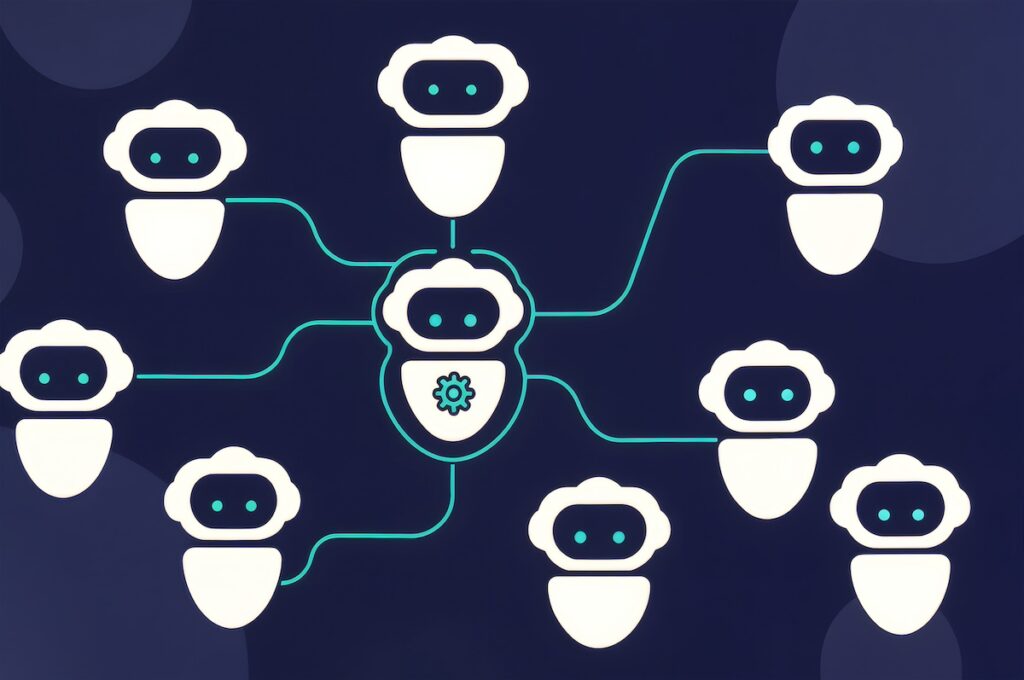Architecting Robust Multi-Agent AI Systems


When Microsoft Dynamics professionals implement AI agents across complex organizational structures, data security becomes paramount. This post examines the considerations for architecting secure multi-agent systems that integrate Microsoft Copilot, Salesforce Agentforce, and Dynamics 365 F/SCM through MuleSoft while maintaining strict legal entity boundaries.
Understanding Legal Entity Data Isolation Requirements
Consider this scenario: Your organization operates multiple subsidiaries, each functioning as distinct legal entities with separate financial records, operational transactions, and customer databases. Regulatory compliance, tax requirements, and contractual obligations demand absolute data separation, not just at the ERP level, but extending through every AI agent interaction.
The challenge intensifies when AI agents, whether Copilot in Teams, Agentforce in Salesforce, or custom automation bots, must access this data while maintaining the same strict boundaries your most trusted employees observe.
Foundational Technology Architecture
MuleSoft’s Anypoint Platform functions as a comprehensive policy enforcement point. This strategic positioning enables:
- API Management with Context Awareness: Every API endpoint considers legal entity context before processing requests
- Cryptographic Token Validation: Signed authentication tokens prevent tampering and unauthorized access
- Real-time Data Transformation: Filtering and routing based on entity permissions before data reaches downstream systems
Copilot and Agentforce Configuration
Both AI platforms require careful configuration to communicate exclusively through MuleSoft’s secured endpoints in the following way:
Copilot Studio Agents
- Configured for Microsoft environment integration
- OAuth authentication with entity-specific scoping
- Request formatting includes user identity and legal entity parameters
Agentforce Integration
- Salesforce-native operation with external API connectivity
- Token-based authentication with MuleSoft endpoints
- Entity validation on every data request
Implementing Comprehensive Data Boundaries
Every data access request follows a strict validation chain:
- Initial Authentication: AI agent authenticates with OAuth provider
- Token Verification: MuleSoft validates cryptographically signed tokens
- Entity Matching: Legal entity in token must match requested data scope
- Permission Checking: User roles and departments verified against request type
- Data Filtering: Results filtered to authorized entity and scope before transmission
D365FO Security Integration
Dynamics 365 Finance & Operations’ Extensible Data Security (XDS) provides database-level protection across:
- Row-Level Security: Automatic filtering based on legal entity parameters
- Integration Boundary Enforcement: Failed requests blocked at database level
- Audit Trail Generation: Complete logging of all access attempts and results
Critical Implementation Note: No data caching occurs in MuleSoft without explicit legal entity identifiers, preventing accidental cross-boundary data exposure.
Advanced Token Architecture
OAuth tokens carry comprehensive authorization information:
Audience Restriction
- Tokens valid only for specific API endpoints or MCP servers
- Prevents token reuse across unauthorized services
Legal Entity Specification
- Explicit entity identification in token claims
- Immutable once issued, preventing modification attempts
Role and Scope Definition
- Detailed operation permissions aligned with D365FO and Salesforce roles
- Granular control over data access and modification capabilities
Defense-in-Depth Security Model
Each system component enforces legal entity boundaries independently:
Copilot/Agentforce Level
- Token-based request formatting
- Scope limitation at agent configuration
MuleSoft API Level
- Token validation and claim extraction
- Request filtering and transformation
F&SCM/Salesforce Level
- Database-level security enforcement
- Role-based access control
Risk Mitigation Strategies
For token security and monitoring and detection, the following strategies can be taken for risk mitigation:
Token Security
- Short expiration periods minimize compromise risk
- No persistent super-user or service accounts
- Tight scoping prevents privilege escalation
Monitoring and Detection
- Real-time audit logging across all layers
- Automated alerting for suspicious cross-entity attempts
- Dashboard visibility for security teams
- Compliance reporting for GDPR, SOX, and internal governance
Business Impact and Community Value
Operational Benefits
This architecture enables organizations to maintain regulatory compliance while empowering business departments with AI capabilities. Employees and customers interact naturally with AI agents, confident that privacy boundaries remain intact.
Scalability Considerations
The solution adapts to changing requirements and expanding regulatory landscapes. As new legal entities join the organization or compliance requirements evolve, the token-based architecture scales seamlessly.
Community Implementation Insights
Microsoft Dynamics communities benefit from sharing these architectural patterns, enabling rapid deployment of secure AI solutions across diverse organizational structures. The defense-in-depth approach provides confidence for solution architects implementing similar multi-entity scenarios.
Conclusion
Building solutions with robust legal entity isolation demonstrates architectural excellence. By leveraging MuleSoft’s integration capabilities, D365FO’s security framework, and properly configured AI agents, organizations achieve seamless automation without compromising data integrity or regulatory adherence.
For solution architects serving complex organizations, these patterns provide a foundation for responsible AI innovation that scales with business growth while maintaining the trust and security modern enterprises demand.

